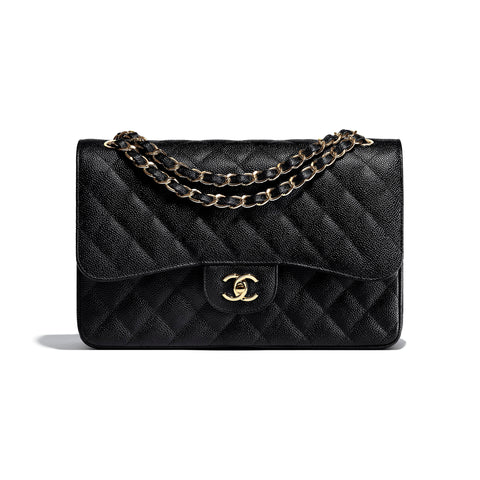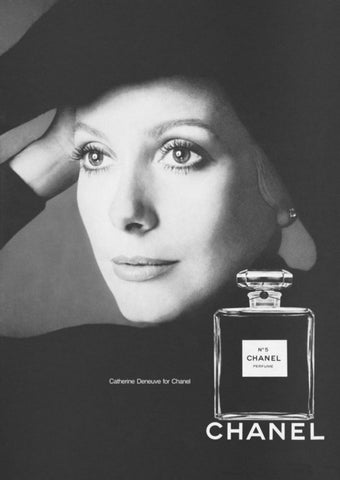The two important core values of SOMEFANCYNAME are empowering women and gender equality. When women come together – great things can happen. Majority of our designers are women and they, in turn, empower other women and sit-at-home moms by giving them jobs and competitive salaries. We can support other women, mentor one another, elevate one another, ensure our voices are heard at the table. One woman’s accomplishment is an accomplishment for all women. Therefore, on Wednesdays, we make sure to celebrate women who inspire us.
Today we will talk about an iconic woman working towards success within a fashion industry, the most revolutionary stylist of the 1900s - Gabrielle Bonheur Chanel, known as famous Coco Chanel.
CHILDHOOD
Gabrielle Bonheur Chanel was born in 1883 to Eugénie Jeanne Devolle Chanel, known as Jeanne, a laundry woman the charity hospital in France. Her father, Albert Chanel, was an itinerant street vendor who peddled work clothes and undergarments traveling to and from market towns. Gabrielle was one of five children and the family lived in abject poverty, crowded into a one-room lodging. The facts of her early days are not really known, the lives of the poor were rarely fully documented. When she was 12, her mother died of tuberculosis, the father left his three daughters in the grounds of an orphanage and disappeared.
Life in a strict catholic institution run by sadistic nuns made Chanel rebel against all forms of discipline and fight to have her own way. They nuns failed to break her, but strengthen her need to take control of her life as soon as she could. However, placement in the orphanage contributed to Chanel's future career, as it was where she learned to sew. At age eighteen, Chanel had to leave the orphanage. She went to live in a boarding house for Catholic girls in the town of Moulins.
EARLY CAREER
Chanel went to Moulins to work as a seamstress for the performers by day and a cabaret singer by night, earning the nickname "Coco" from the song "Who Has Seen Coco?" which she sang. She was a beautiful young woman.
Her professional life began in 1906, around the age of 23, Chanel became involved with Etienne Balsan, who she boldly suggested to set her up with a small shop. Although he refused her proposal, he did agree to finance a business for her from his Parisian apartment.

(Source: https://www.lofficielusa.com/fashion/gabrielle-chanel-history)
For the next three years, she lived with him surrounded by diamonds, dresses, and pearls. But being the mistress of a busy man was not enough for Chanel. She wanted to use her ambition.
The dashing English millionaire Arthur "Boy" Capel was, according to Coco, the one true love of her life. Capel was a friend of Etienne Balsan. He was a charming, handsome polo-player, with an irrepressible desire for fast living and adventure. Having earned his fortune through the coal mines in northern England, he had an entrepreneurial spirit and took the idea of Coco's hat-making much more seriously than Balsan.
Coco had fallen completely in love with Capel and ran away to live with him in Paris.
HER FASHION JOURNEY
Having outgrown the space in the apartment within a year, she decided to secure a commercial premises in the center of the established couture district. On January 1910, what was to become the foundation of an empire opened its doors at 21 Rue Cambon.
Chanel started her business selling the hats she was already making. She later added stores in Deauville and Biarritz and began making clothes.
Coco's first pieces were created in response to her own need to live freely and oppose women's repression. Funcional clothes were inspired by the Normandy fishermen, sailor's shirts with open necks, loose linen pants, long skirts and turtleneck sweaters, all designed for comfort and ease.
Chanel was increasingly intrigued by the casual elegance of men's clothing and took many ideas from Capel's wardrobe.
Soon, she introduced dresses shockingly simple compared to what was "trendy" in the couturiers in Paris. She also made a deluxe casual clothing suitable for leisure and sport from fabrics such as jersey and tricot, primarily used for men's underwear back then. Capel died in a car accident in 1919. It was a tragedy for Coco, but she never gave up.
In 1915, she opened the Biarritz shop, boutique so lucrative that in 1916 Chanel was able to reimburse Capel's original investment. In 1918, Chanel purchased the building at 31 rue Cambon, in one of the most fashionable districts of Paris. In 1921, she opened an early incarnation of a fashion boutique, featuring clothing, hats, and accessories, later expanded to offer jewellery and fragrances.
Unfortunately the outbreak of World War II led Coco to close her business. She fired her workers and shut down her shops. She left Paris, spending some years in Switzerland in a sort of exile. She also lived at her country house in Roquebrune for a time. At more than 70 years old, after having her couture house closed for 15 years, she felt the time was right for her to come back to fashion world. Although, the competition was high, her feminine and easy-fitting designs soon won over shoppers around the world.
ICONIC DESIGNS
In 1925, Chanel introduced the legendary Chanel suit with collarless jacket and well-fitted skirt. The designs were revolutionary for the time, emphasizing comfort over the constraints of then-popular fashions. She helped women say goodbye to the days of corsets and other uncomfortable garments. Chanel wanted women to be elegant while allowing them to move freely. Her favourite color was black. Coco was one of the pioneers of women’s pants, if not for her, women might still have been wearing skirts and dresses only.

(Source: https://medium.com/@randhawalagan/15-interesting-facts-about-coco-chanel-c968adc7fc9f)
The Chanel suit caught the attention of some of the most influential women of all time. First Lady Jackie Kennedy, wore a pink Chanel suit on the day her husband United States President John F. Kennedy. After that, the suit got extremely popular in US. In more recent years, the Chanel suit still inspires modern-era fashion designers. With Karl Lagerfeld (artistic director of CHANEL) altering the style of the iconic piece, the suit has kept its role as a true emblem in fashion history.

(Source: https://www.elle.com/fashion/news/a24025/jackie-kennedy-pink-chanel-suit/)
Another signature piece was the iconic handbag, which originates in the 1920s, when Coco got tired of holding a handbag in her hands all the time. She was inspired by the straps found on soldier’s bags. She introduced a handbag that allowed women to use their hands while carrying their belongings. The chain used for the strap echoed the chatelaines worn by the caretakers of the orphanage where Chanel grew up, the burgundy lining referenced the convent uniforms.

(Source: https://www.chanel.com/au/fashion/handbags/c/1x1x1x1/flap-bags/)
Coco Chanel was a real fan of the fragrances. She launched her perfume, Chanel No. 5, which was the first to feature a designer’s name. Chanel once said that the perfume “is the unseen, unforgettable, ultimate accessory of fashion that heralds your arrival and prolongs your departure"; "a woman should smell like a woman, not a rose", Coco claimed.


(Source: https://www.chanel.com/au/fragrance/p/125530/n5-eau-de-parfum-spray/)
Did you know that Coco Chanel was the one who introduced the little black dress? The dress was released in the Great Depression era, when simple and affordable was key. During the war, textiles and fabrics were rationed, and the simple black dress remained the "go to" outfit, as you could be elegant without breaking the bank. Vogue predicted that such a simple yet chic design would become a virtual uniform for women of taste. Well..It did!

(Source: https://lamode.info/coco-chanel.html)
In the mid-1920s Coco started working with tweed for her womenswear. The fabrics which at the time was used only in menswear, soon became her signature. It was the time when she introduced her Tweed Jacket, which till this day remains an unerring constant. A confirmed classic since its debut over 60 years ago. It is an item which captures the spirit of the old days in the same way.
LAST DAYS
Chanel died on January 10, 1971. She was 88 years old. She never married, she once said “I never wanted to weigh more heavily on a man than a bird.” Hundreds crowded together at the Church of the Madeleine to for the funeral. In tribute, many of the mourners wore Chanel suits.
After her death, designer Karl Lagerfeld took over her company to continue the Chanel legacy. Today her namesake company is held privately by the Wertheimer family and continues to generate hundreds of millions in sales each year.

(Source: https://www.chanel.com/au/)
Coco Chanel was a number of things; wealthy, successful, controversial. But there is one thing for sure. She not only has revolutionized the course of women's fashion, but she resisted limitations and encouraged women to do the same, in fashion, and otherwise.

